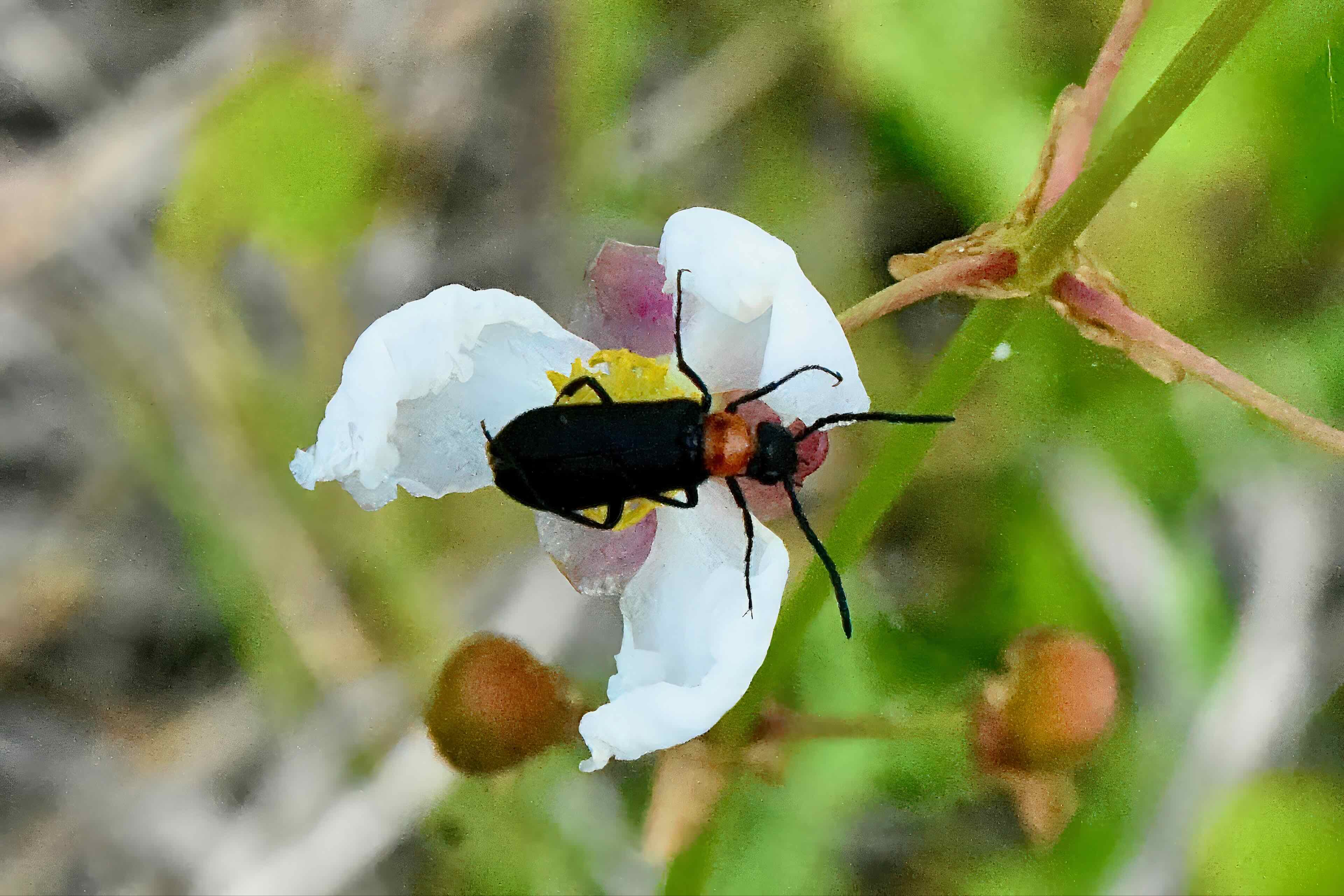
Eastern black-headed nemognatha, photographed at J.W. Corbett Wildlife Management Area — Hungryland, West Palm Beach, Palm Beach County, in March 2025.
It looks harmless enough. It won’t bite you. It won’t sting you. But the eastern black-headed nemognatha should come with a warning label: Handle With Caution! Or perhaps a Beware of Bug sign.
The reason? It’s a blister beetle, and mishandling him (or her) could cause a nasty looking bubble to boil up on your skin.
The warning is especially applicable to certain unsuspecting bees, but we’ll get to that in a bit.
There are some 30 species of blister beetles in the Nemognatha genera found in North America. The eastern black-headed nemognatha, Nemognatha nemorensis is one of them.
It is a Florida native, found in a good chunk of eastern and central United States. Its range extends as far north as Quebec and Ontario in Canada, southward to the Sunshine State and westward to Minnesota and Texas.
For the most part, eastern black-headed nemognatha isn’t a threat to us human types. It feeds on flower parts, mainly those in Asteraceae, the daisy family. Black-eyed Susans and thistles are among its favorites. The name, nemognatha, means “thread jaw,” a reference to how it eats. Not exactly scary stuff.
However, pick it up a little too roughly and it will ooze a chemical called cantharidin, a blistering agent. Your skin will erupt with a painful blister; symptoms will worsen if it touches your eyes, your mouth or other mucus membranes. Most likely, the blister will go away without the need of any medical treatment. But if you get it in the eye, see an ophthalmologist.
Horses have died from cantharidin poisoning by eating hay that is invested with blister beetles. It’s that serious.
Cantharidin, by the way, has been used medically for thousands of years, mainly for treating skin problems like warts. Because of its toxicity, the Food and Drug Administration advises that it be used only as a topical agent. Doctors can prescribe it, but access to it is limited.
Another aside: cantharidin also has been used as a aphrodisiac — by eating blister beetles — and as a murder weapon. If you’ve heard of Spanish fly, this is it. And just to be clear, eating the beetles under any circumstance isn’t a good idea.
Eastern black-headed nemognathas are small creatures between 5 millimeters and 9 millimeters long (three-sixteenths to a third of an inch). They have a dark head, naturally, a red thorax and black abdomen. The body is soft and the legs are long. The head can be relatively light-colored as well.
There is a look-alike in Nemognathas nigripennis, another blister beetle, but it has a western distribution versus eastern black-headed nemognathas’ eastern haunts. N nigripennis to our knowledge has no common name.
To us, the most interesting thing about eastern black-headed nemognathas, is its offspring rather than the adults. Females lay their eggs in flowers; when the eggs hatch, the larvae, called a triungulin, attaches itself to a visiting female solitary bee (as opposed to a honey bee). These are ground-nesting bees. The female will dig a chamber, provision it with pollen and nectar, then lay an egg. The young eastern black-headed nemognatha drops of the bee and then eats the egg and eats the food intended for the bee's offspring.
Eastern black-headed nemognathas go from egg to first grub stage, to second grub stage to pupae before emerging from the chamber and going about the business of an adult blister beetle. In Florida, they’re most likely to be encountered spring into fall.
Worldwide there are something like 2,500 blister beetle species, divided into 120 genera. There are 26 blister beetle species found in Florida.
The eastern black-headed nemognatha is a member of Meloidae, the blister beetle family.
J.W. Corbett Wildlife Management Area — Hungryland
